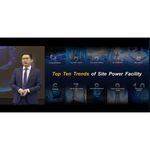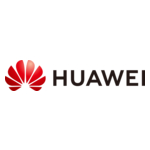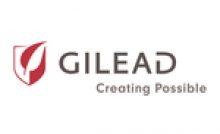Huawei Unveils Top 10 Site Power Trends


SHENZHEN, China–(BUSINESS WIRE)–Huawei has released a white paper on the Top 10 Site Power Trends at an event. According to Yao Quan, President of Huawei Site Power Facility Domain, 2022 was a challenging year for carriers due to the global energy crisis and the increase in oil and electricity prices. Against this backdrop, Huawei shares the top ten site power trends to help carriers reduce energy consumption and achieve carbon neutrality.
Trend 1: Energy Digitalization
With the global consensus on achieving carbon neutrality, the ICT sector has been striving to go green (Green ICT) and helping other sectors to do the same (ICT for Green). Huawei integrates digital technologies and power electronics technologies and lets bits manage watts, promoting the low-carbon transformation of the ICT and other sectors.
Trend 2: Low-Carbon Network
To achieve carbon neutrality, carriers seek to build a green and low-carbon network throughout the lifecycle, from network construction and power supply to operation.
Site structure is simplified by changing from equipment rooms and cabinets to poles. PV systems are installed on sites to reduce grid power consumption. Digitalization of sites helps perform intelligent O&M, reducing manual site visits. Sites with abnormal energy consumption and carbon emissions can be pinpointed in real-time, further reducing site O&M costs and carbon emissions.
Trend 3: Green Power Utilization
As new energy technologies develop and new business models emerge, site power supply becomes diversified, and clean energy sources such as solar, wind, and hydrogen are utilized more. With the decreasing costs for clean energy, carriers will increase the proportion of self-built green power plants besides PPA.
Trend 4: Site Simplification
Conventional sites are often deployed in equipment rooms or cabinets, in which air conditioners consume a large amount of energy, causing low efficiency and high electricity fees. To address this, the trend is to simplify site structure by changing from rooms to cabinets and poles, reducing energy consumption and carbon emissions.
Trend 5: High Efficiency
Efficiency optimization is no longer confined to components. The focus changes from rectifiers to the link of generation, conversion, storage, distribution, and consumption. By deploying sites in cabinets or on poles, the SEE (Site Energy Efficiency) can be raised to 97%, and site footprint is also reduced. Additionally, energy devices and wireless devices are coordinated to implement precise energy efficiency management and energy consumption optimization.
Trend 6: Smart Sites
Conventional sites usually adopt dumb components that do not support refined management. Energy consumption and carbon emission of sites cannot be viewed, and energy saving and carbon reduction cannot be performed. Besides, site maintenance relies heavily on manual site visits, leading to high O&M costs. Smart site management and automatic O&M can address these issues by providing real-time energy efficiency and carbon emission data and improving site operation efficiency.
Trend 7: Telecom Sites to Shared Sites
Telecom sites have the potential to become shared sites, supplying power to the public and transforming telecom carriers into integrated service providers. Site service modes will become more diversified, offering new services such as virtual power plant (VPP), electricity access with the network, and rent offset with electricity to increase site revenues and unlock the value of telecom sites.
Trend 8: Multi-Mode Architecture
As more types of power sources are used, site power must be able to support different input modes. Shared sites also need to meet power supply requirements of different loads, requiring multi-mode output. Thus, the multi-mode architecture will become mainstream.
Trend 9: Power Backup + Energy Storage
In traditional telecom sites, energy storage only provides backup power for communications equipment. Now carriers start to develop new business models such as peak staggering and VPP. Energy storage participates in power grid scheduling. Site batteries develop from backup power to an integrated energy storage system.
Trend 10: Security and Reliability
For sites, security and reliability lie in network security and hardware safety. As energy digitalization gains momentum, governments and industries are working to prevent attacks and security risks. A series of security and safety specifications are released.
Download the White Paper: https://digitalpower.huawei.com/attachments/index/0164454533db4b01a02d144ae0eb209d.pdf
Contacts
Recent Posts
Daphne Announces 2024 Annual Results Revenue and Profit Attributable to Shareholders up 23% and 71% Respectively
Steady Final Dividend of HK$0.02 Per Share Dividend Payout Ratio was Approximately 35% (RMB' million)…
Last November was the time for EU beef in Manila, campaign led by Provacuno
MANILA, PHILIPPINES - Media OutReach Newswire - 26 March 2025 - Within the framework of…
Galaxy Macau™ and SCMP Learn Team Up to Inspire New Educational Pathways at Pioneering Parents’ Talk Held at GICC
Leading Education Experts Gather to Shape Conversations Around Global Education for the Next Generation MACAU…
Insulation Material Y-Warm: A New Era of Thin and Light Winter Apparels
BEIJING, CHINA - Media OutReach Newswire - 26 March 2025 - Even after over a…
Experience the Rich Fishing Heritage of Hong Kong with “Aberdeen 1773”
HONG KONG SAR - Media OutReach Newswire - 26 March 2025 - Hong Kong Fisherman's…
FBS Supports 250 Children in Indonesia During Ramadan
JAKARTA, INDONESIA - Media OutReach Neswire - 26 March 2025 - FBS, a leading global…


